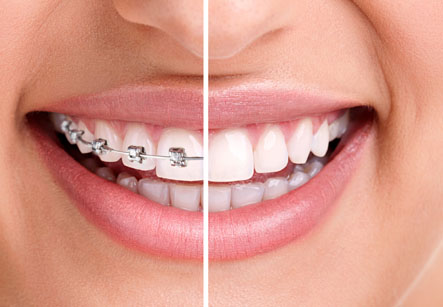Orthodontics
Introduction
Orthodontics literally means to straighten the teeth. It is a type of dental treatment which aims to improve the appearance, position and function of crooked or abnormally arranged teeth. Orthodontics uses mechanical devices such as a brace over a certain period of time. This period is usually 18 months to two years to correct the position of the teeth. Healthcare professionals specialised in orthodontic treatment are known as orthodontists. They usually work in dental surgeries or specialist hospital units.
Need for orthodontics treatment
Many times, a child’s teeth and jaw do not develop in the normal way and many teeth are out of place or not aligned. The medical term for teeth being out of position is malocclusion.
Some cases of malocclusion occur for no obvious reason. Other cases have some discernable cause such as certain behaviours including frequent thumb sucking or an injury to the teeth or bones of the face.
Children and teenagers require orthodontic treatment commonly to correct developmental problems of the teeth. Iran offers a superior Dental treatments that is world best quality. For patients from the USA, and Europe for example, the savings can be 60% or more.

Many cases of malocclusion do not pose serious health problems. However, if malocclusion is not corrected early during the teenage years, it may affect the appearance of the teeth and in turn the shape of the face. This could cause psychological and emotional problems, such as lack of self-confidence, anxiety and depression.
In more severe cases of malocclusion, the functioning ability of the teeth, mouth and jaw may be affected. It can make it difficult for a person to eat food; cleaning the teeth may be harder and the teeth may be vulnerable to damage.
Orthodontics in adults
Children and teenagers require orthodontic treatment commonly to correct developmental problems of the teeth. However, an increasing number of adults are now also seeking this treatment. The purpose of orthodontic treatment in adults may be to correct problems which were not treated in the past or to improve the appearance and function of the teeth. The principles of treating adults are almost the same as those for treating children, although the costs may be higher if the treatment is more complex.
Another reason for orthodontic treatment in adults is if they have a condition known as sleep apnoea. In this condition, the muscles and soft tissue at the back of the throat collapse backwards on during sleep. This causes breathing difficulties and disturbed sleep which results in tiredness and sleepiness on the following day.
People with mild sleep apnoea can be benefitted from an orthodontic device called as a mandibular repositioning splint, which is designed to prevent the area at the back of the throat from narrowing.
Reasons for treatment
Some of the most common reasons for which the people are referred to an orthodontist for orthodontic treatment are as follows:
1. Protruding upper front teeth –this is one of the most common reasons for needing orthodontic treatment. In this case, the teeth may be more prone to damage during falls or contact sports.
2. Crowding –there may be lack of enough space for the teeth in people with narrow jaws which results in crowding.
3. Impacted teeth – the adult teeth erupt through wrong position in the jaw.
4. Asymmetrical teeth – in some people, the centre of the upper and lower teeth do not match and this can give their teeth an asymmetrical or crooked appearance.
5. Deep bite – the upper teeth cover the lower teeth too much.
6. Reverse bite – the upper teeth bite inside the lower teeth.
7. Open bite –in this case, the upper and lower front teeth do not meet when the mouth is closed. An open bite often occurs as a result of prolonged thumb sucking.
Assessment during orthodontic treatment
In the first stage of orthodontic treatment, the orthodontist makes an assessment of the current state of the patient’s teeth and their likely development. This is usually done by taking X-rays and making plaster models of the teeth.
After the assessment, the orthodontist provides more information about the type of treatment which is needed, and the possible results.
Orthodontic appliances
After this, the orthodontist advises the use of appliances to correct the position of the teeth. There are four main types of appliance which are as follows:
1. Removable appliances –these are usually plastic plates that cover the roof of the mouth and can be clipped on to some teeth. These can be taken out and cleaned.
2. Functional appliances – a pair of removable plastic braces which are joined together or are designed to interact together to make changes in the teeth alignment and can be clipped on to the upper and lower teeth.
3. Fixed appliances – A non-removable brace which is fixed to each tooth with a metal or ceramic bracket.
4. Headgear – This is not primarily an orthodontic appliance, but it can be used with other appliances to exert a certain type and direction of pressure.